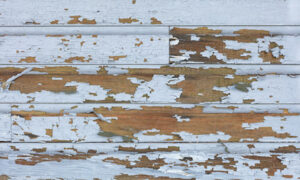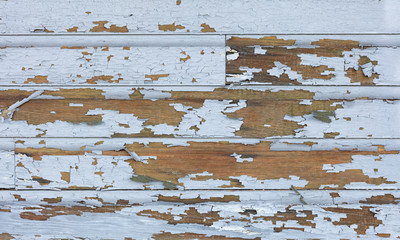Lead paint is a serious health risk and should only be removed by professionals. The EPA requires anyone performing lead paint removal or renovations to be RRP certified.
Encapsulation is the simplest and least expensive solution to prevent lead dust inhalation or paint chip ingestion. It involves covering the affected area with a new surface. Visit Website to learn more.

Lead is a heavy metal that’s rare in its natural form but common in the environment due to widespread industrial use. It’s a toxic element that can cause heart and kidney problems, developmental issues in children, and behavioral problems. Fortunately, lead poisoning is preventable with proactive measures like regular water testing and professional lead removal.
Removing paint is one of the main methods of lead abatement, but this task requires careful handling and attention to safety. Lead abatement professionals use various techniques to remove hazardous coatings from surfaces, including sanding, scraping and chemical strippers. When used correctly, these tools can be effective and safe for both the contaminant and the worker.
Before attempting any lead paint removal, be sure to follow the product’s instructions and safety guidelines carefully. Also, take steps to protect hardware and other project elements from exposure to solvents or other chemicals. Finally, cover air vents to keep fumes from circulating throughout the work area.
Chemical paint strippers dissolve paint layers, exposing the underlying material to air and other elements. Methyl chloride (MC) is an especially strong solvent with small molecules that penetrate deep into paint layers. This chemical creates unhealthy vapors and must be applied sparingly. N-methyl pyrrolidone (NMP) has larger molecules and breaks the chemical bond between paint and object, but it’s ineffective on baked-on or polyester coatings. Newer solvents derived from citrus oils, soy esters, and other non-toxic ingredients are safer and more effective than traditional chemical strippers.
Sanding paint releases dangerous lead dust into the air, which can be inhaled or ingested and cause poisoning. In addition, sanding can damage brickwork and other surfaces in the home. To avoid these risks, hire a professional to complete any lead abatement tasks that require power tools.
Alternatively, encapsulation, which involves covering or sealing an object coated in lead paint, is an option. However, it’s important to remember that even a thick coat of encapsulation paint can chip and erode over time. Encapsulation is not permanent, and the cost of constant assessments and recoats quickly adds up. For a long-term solution, professional replacement is the best option.
A house built before 1978 is almost certain to have lead paint in some areas, and even homes that were built recently can still contain this harmful material. When it comes to protecting your family, it is important to make sure any exposed lead is either removed or encapsulated.
Removing all exposed lead can be expensive, and not everyone can afford it. Encapsulating, which is covering the surface with a protective layer, is a more affordable solution. This process involves prepping the wall and then applying a liquid coating that will encapsulate or “seal in” the existing paint. This type of coating can be applied to walls, floor surfaces and more. Regular paint cannot be used as an encapsulant, but there are special products that are safe to use and will work well.
When encapsulating, it is important to choose a contractor with experience and who will take safety seriously. The contractor should follow proper application and surface preparation techniques in order to get the best results. This will help to ensure the protective layer lasts as long as possible, keeping the lead in place and preventing it from causing harm.
Once the encapsulant dries, it creates a barrier that prevents any lead dust or paint chips from escaping. This will effectively isolate the hazard and make it safer to live in or visit the area. The encapsulation will need to be inspected and maintained regularly in order to continue to be effective.
The main downside of encapsulation is that it is not as strong as removal and will not stop the hazardous materials from eventually deteriorating and becoming a threat again. This is why it is so crucial to have any contaminated surfaces tested for lead in order to determine the most appropriate course of action.
Some asset owners may be nervous about the up-front investment that lead abatement can require, but long-term cost analysis shows that removing hazards is more economical than continuing to encapsulate them. This is especially true for governments who must decide on a budget for their lead abatement projects.
Many of the same methods used for paint removal can also be applied to lead-contaminated surfaces. However, this is only a temporary solution. Coats of encapsulation paint or barriers built around lead hazard areas don’t last long and will have to be reapplied or replaced over time. The best way to prevent lead contamination is to use a proactive approach that eliminates the source of the contaminant entirely.
This includes whole-house filtration systems that work to treat water at the point of entry into your home and prevent contaminants like lead from entering the system in the first place. It’s also important to regularly test your water and seek professional testing services to ensure that the levels of lead you are exposed to do not continue to increase over time.
One of the most popular technologies for removing dissolved lead from water and wastewater streams is chemical precipitation. This process involves adding a caustic chemical to the stream, increasing the pH level until the dissolved lead is precipitated out of solution as solid metal hydroxide particles.
Another common technology for removing dissolved lead from water is physical separation via adsorption. This is achieved by passing a liquid stream through a type of adsorbent media, which has been selected for its ability to pull the target dissolved substance out of solution and hold it on the surface of the medium as a molecular or atomic film. This method is highly effective and has a range of advantages over other methods for separating heavy metals from water.
Other methods for removing dissolved lead from water include reverse osmosis, distillation and ion exchange. However, these technologies are unable to target specific heavy metals, and will often remove other vital elements and compounds in the process. This is especially true for reverse osmosis, which uses enormous amounts of energy to separate water into its constituent parts.
It is important to choose the right method of lead removal for your needs and ensure that your chosen solution remains effective over time. This can be done by avoiding sources of contaminant, taking regular steps to keep your filtration system working properly, and conducting routine maintenance checks with the help of professionals.
As a long-term solution, replacing old lead paint or hard barriers with new materials is the best way to remove lead from a property. This method ensures that all traces of the lead are gone, rather than simply covering it up like the overcoats that encapsulation paints provide. However, it’s important to note that this is not a permanent fix and will still require periodic assessments and coatings. As such, this is only a viable method for properties that are located in an area where environmental hazards are relatively low.
Activated carbon and reverse osmosis filters are both effective at removing lead from drinking water. In fact, they can remove up to 99% of the dissolved metal in water. Distillation is another option that involves heating water to vapor and then condensing it back into liquid form. This process is effective at removing any contaminants with higher boiling points than water, including lead.
In industrial settings, many facilities pursue a range of lead removal technologies to help meet wastewater contaminant limitations or as part of a treatment and reuse program. Some of the most common processes include chemical precipitation, coagulation-flocculation, ion exchange and adsorption.
Physical adsorption, which involves passing a liquid stream through a granular or porous material that’s selectively adsorbed to target contaminants, is an inexpensive and simple technology that can be used for removing lead from streams with moderate concentrations. The process offers no sludge generation, a wide selection of affordable adsorbent materials, and good selectivity for heavy metals.
Coagulation-flocculation and ion exchange are more advanced, costly treatments that often result in the formation of sludge. However, they are effective in reducing lead ions in high concentrations and can be used to treat wastewater that has been pretreated by other methods.
Chemical precipitation can be effective for lowering the concentration of dissolved lead in streams, but it produces large volumes of sludge and is not ideal for treating highly concentrated waste streams. Ion exchange is more effective, but it requires extensive pretreatment of the ion-exchange resin matrix to maintain efficiency. Lastly, membrane separation (MD), which involves passing a liquid stream through ion-exchange resin, can achieve high levels of lead removal (98% in air gap MD) in highly concentrated solutions.
